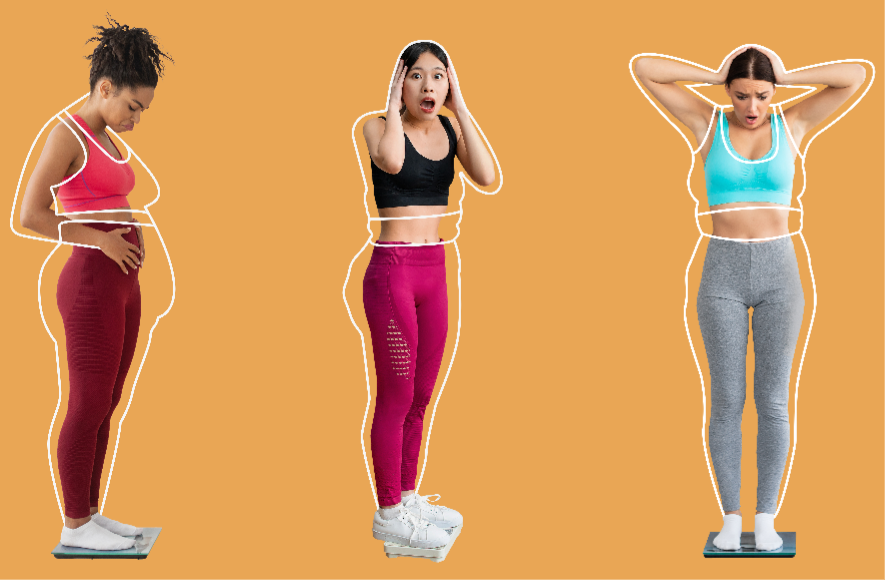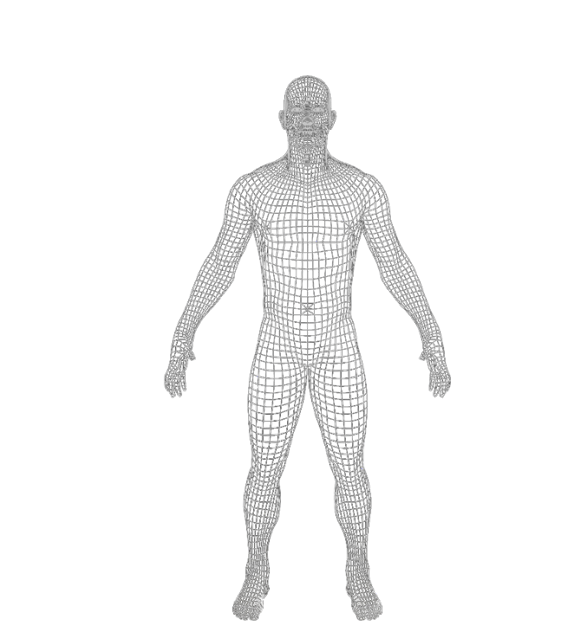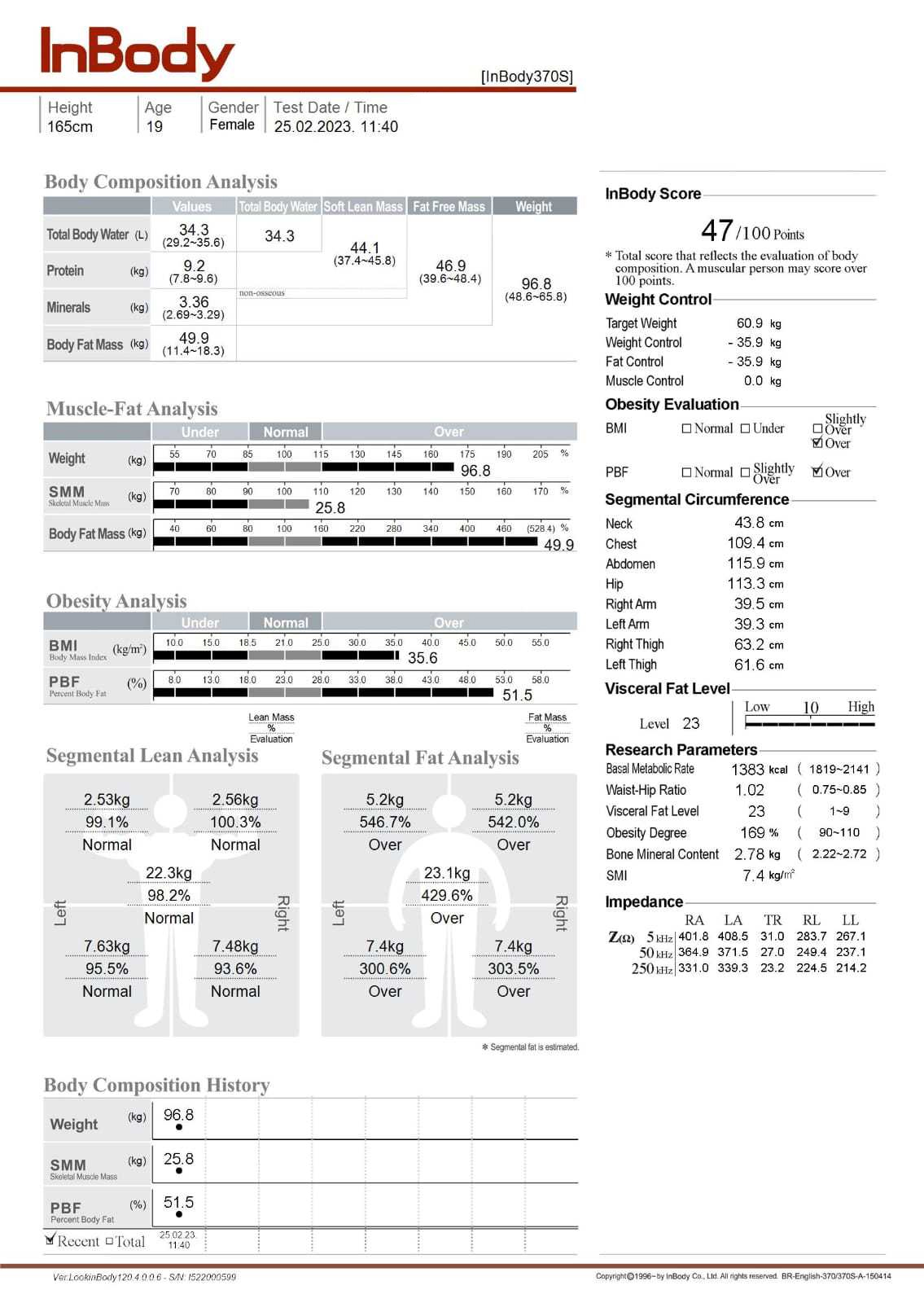

In most places, these are guesswork based on expert opinions and approximate equations. But we now have bioimpedance technologies that can accurately determine these parameters.
The Inbody is one of the most advanced body composition analysis machines. It measures body composition by Bio Impedance Technology (BIA) with 8 point tactile electrode method. It passes a safe, low-intensity electrical current through the body via the tactical points on the machine (hands and feet). The resistance to the current flow determines the difference between muscle mass, fat mass (including visceral and subcutaneous), water and mineral.
The process is non-invasive, pain-free, and takes less than two minutes to perform. The interpretation will help you get valuable insights into your body composition and basal metabolic rate.

Observing the following precautions during the testing is essential to get accurate and reproducible reports.
Precautions: Avoid the test if you have any cardiac pacemaker implants. The test is not advisable in pregnant women. In addition, if you have had breast augmentation, irremovable piercing, metal plates, pins, screws, or metal prosthetic joints, the results of the tests may not be accurate.
Body composition is, in simple words, what the body is made of – fat, protein, minerals and body water. In essence, it describes weight more accurately than BMI. Body composition analysis can accurately show changes in fat mass, muscle mass, and body fat percentage. This can help validate effects of an entire range of Physical Training, Patient Care, and Wellness.
The test should be done by anyone who wishes to know their body composition. Even if your body mass index is normal, you could still do the test to find the proportion of fat in your body. It is more important to do it if you have an increased waist circumference ( men > 90 cm and women > 80 cm ), irrespective of BMI. Then, once you are in a weight management program, diet program, or regular exercise, you can use the measurements to see the changes in fat and muscle. In addition, certain diseases like fatty liver and polycystic ovary disease are associated with increased body fat. The test can be used to track this.
There is no specific frequency of testing. However, it would be wise to do it while you are evaluated for obesity, diabetes, polycystic ovary syndrome or fatty liver. In addition, you can check the measurements after three months or six months after starting a weight management program, diet program, or regular exercise.
As a biological variable, frequent measurements will likely show minor value differences. However, these may not be very useful and may even be confusing.

This is a Result Sheet generated by an InBody 770 Body Composition Analysis machine.
